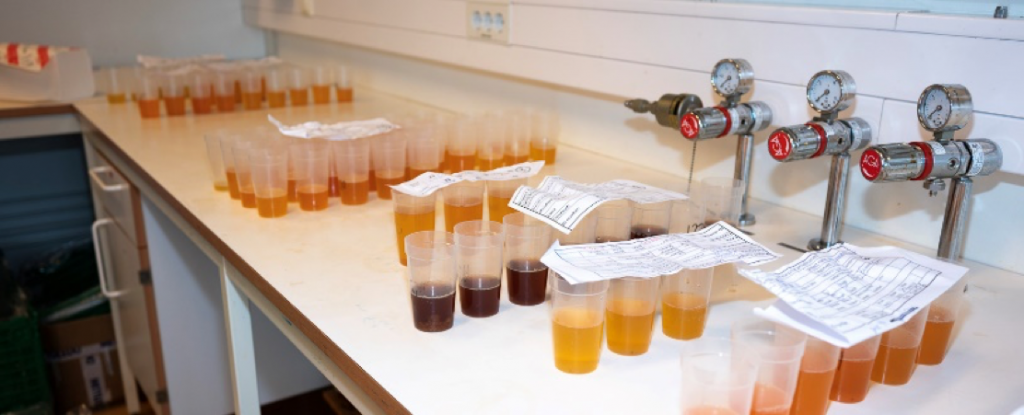
The deep fjords of western Norway are famous for many reasons. Farmers have used the narrow hairlines of arable land between deep fjords and snow-capped mountains for apple growing for centuries. Along with the tradition for growing apples, local processing into apple cider has equally long traditions. Cider from Hardanger has been a part of local cultural heritage for ages, but mostly as a local phenomenon. A growing local cider industry is now rapidly evolving.
Since year 2000 an increasing number of fruit farmers in Hardanger have invested in their production facilities for making quality ciders in higher volumes. Legislation changes allowing for selling wine and ciders directly to customers from the farms had a rapid effect. From three growers making a total annual volume of 45 000 litre in 2013, there were more than 20 producers in 2019, making more than 450 000 litre apple cider annually. There is even more optimism among the growers who now aim for 1 million litre cider every year from the district.
The cider lab
To reach such goals, and reach a stable demand for such volumes, the growers in the region needs a quality control system and continued product development. NIBIO in Ullensvang offers specialised chemical analysis of fruit juices and ciders, so that all orchards can have independent documentation of the contents in their products. Through a cooperation with NOFIMA, NIBIO has recruited a scientifically selected sensory panel who has started training in describing the subtle taste nuances of apple cider. The members of the panel will train their senses to find and define the typicalities of the products. Building a permanent panel of trained sensory panellists adds to the service offer to local growers. Gradually, they will have the opportunity to have their products characterised and described by this independent partner, also serving for quality control.
Being set in a scientific research station, the sensory panel is also challenged to work in research projects. As the production volume of Norwegian ciders increases, product variety and cider diversity are essential to maintain and increase sales. Several producers use berries, elderflowers and hops for flavouring. Others use apple varieties with special properties, e.g. apple with varying contents of acid, sugar, tannins, phenolic substances and colour.
Can historic apple varieties give special qualities to ciders?
At the same time as we wish for a greater variety of ciders on the market, the number of commercially grown apple varieties in Norway is low. The streamlining of agriculture with attention on high yielding varieties that store well, desirable taste and shelf life reduces the number of varieties drastically. In Norway cider is typically made form the apple varieties that are used for fresh consumption. This also means that most ciders are made from four commercial apple varieties, Summerred, Gravenstein, Discovery and Aroma. These apple varieties are characterized by low content of tannins and a high acid content. The result is that many old apple varieties that may offer special properties in ciders - such as Torstein, Ribston, and Haugmann – are no longer found in local orchards. When the use ceases, both the knowledge of and interest in the old varieties disappear.
A NIBIO pilot project aims to develop new taste qualities in apple ciders using historic apple varieties and wild apples. The idea is to gain more knowledge about how these raw materials can contribute, so that Norwegian cider producers have a better basis for using these old apple varieties. The project is a collaboration between NIBIO and the Norwegian Centre for Genetic Resources. Most of the Norwegian old apple varieties are collected from clone archives around Norway.
Ten varieties that may have potential properties for use in cider production were selected in autumn 2022. Apples were harvested from the clone collections in addition to contributions from private growers. 40 kg of wild apples were also collected from Jomfruland National Park. The Apples were pressed and the juice was fermented. The ciders produced, with various combinations of apple varieties and wild apple, will be presented to the sensory panel in Ullensvang. The first tests confirm that cider from old apple varieties contain highly variable tastes, both pleasing and some maybe not so pleasing.
The results of this project will be presented to the cider industry as the project progresses in 2023. Time will tell whether Norwegian cider producers are wise to invest in older Norwegian apple varieties in the future.
Erling Fløistad, text and photo




